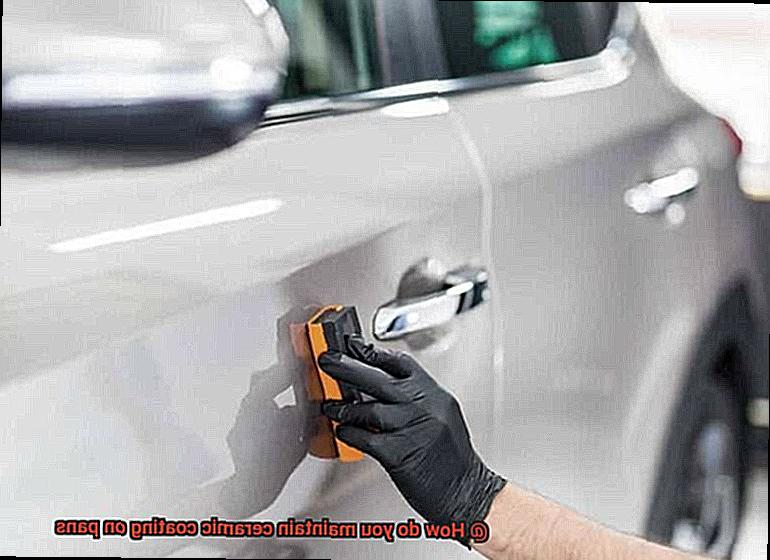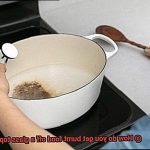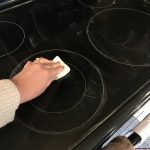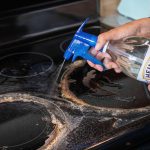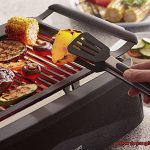Do you find yourself constantly replacing your cookware due to damaged coatings? Say goodbye to this problem with ceramic cookware. These pans offer non-stick properties and a surface that’s easy to clean. But, in order to make the most out of your investment, it’s important to learn how to maintain the ceramic coating.
In this blog post, we’ll teach you everything you need to know about maintaining ceramic coating on your pans. From proper cleaning techniques and cooking dos and don’ts, to storing your pans safely, we’ve got you covered.
You don’t need any special chemicals or complicated methods – our tips are straightforward and easy to follow. With our guidance, you can master the art of caring for your ceramic cookware and impress everyone with your culinary skills.
So dust off your favorite ceramic frying pan and let’s dive into the best ways to keep that coating looking as good as new.
Contents
What are Ceramic-Coated Pans?
Enter ceramic-coated pans, the latest trend in cookware that provides a non-toxic alternative to traditional non-stick coatings made with PFOA and PTFE.
So, what are ceramic-coated pans? They are made by applying a layer of inorganic material, usually silica, to the surface of the pan, which is then cured at high temperatures to create a hard and durable coating. The result is a pan that distributes heat evenly and has excellent non-stick properties.
Ceramic-coated pans come in various shapes and sizes, making them suitable for a variety of cooking tasks like frying, sautéing, and searing. They work well on most cooktops, including gas, electric, and induction. However, they are not suitable for high-heat cooking or broiling.
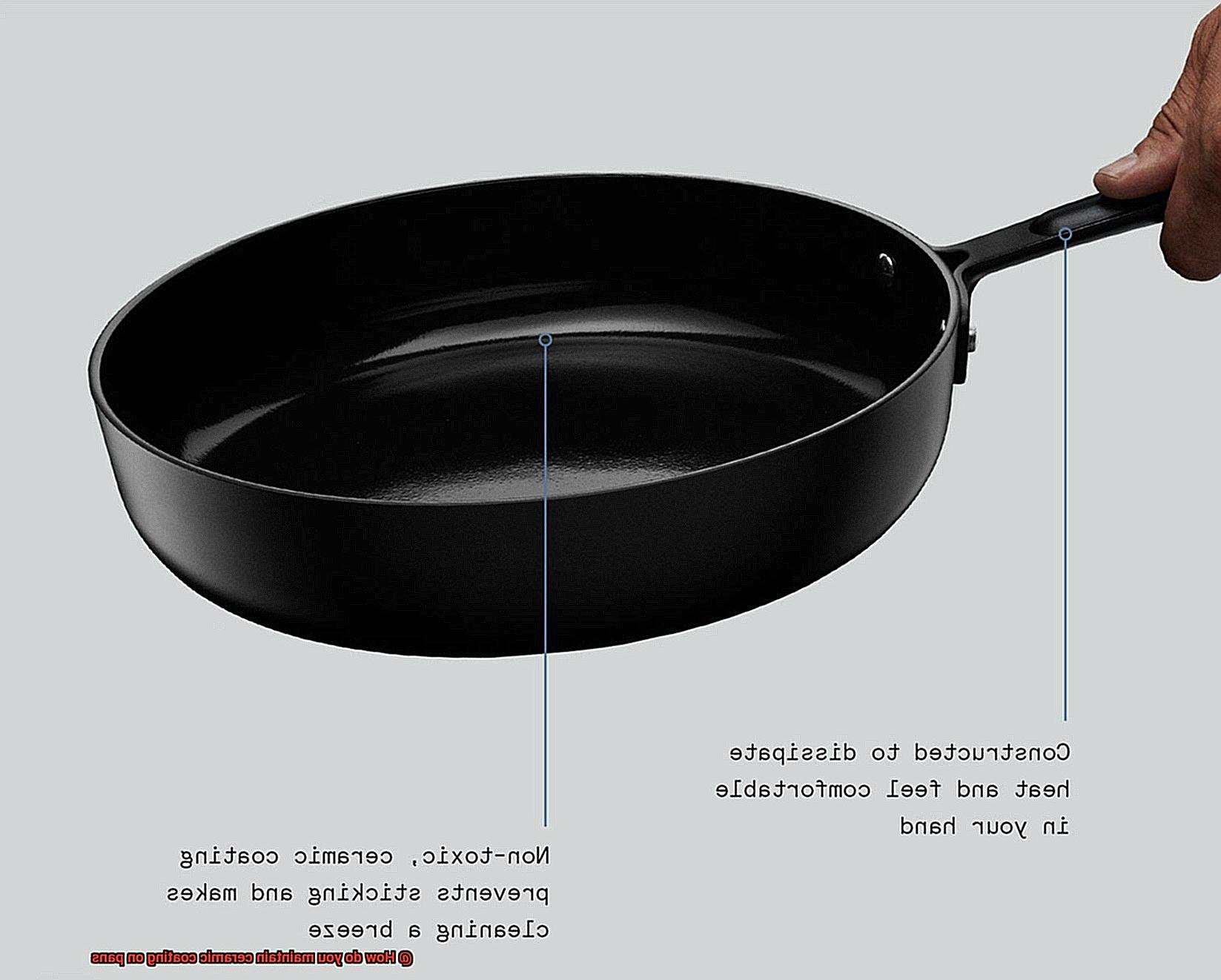
To make your ceramic-coated pans last longer and perform better, it’s essential to take proper care of them. Here are some tips:
- Use wooden, silicone, or plastic utensils: metal utensils can scratch the surface and damage the coating.
- Cook at low or medium heat settings: excessive heat can cause the ceramic coating to break down and lose its non-stick properties.
- Clean with mild soap and warm water: harsh detergents and abrasive scrubbers should be avoided as they can damage the coating. Soak for an extended period should also be avoided.
- Season periodically: apply a thin layer of oil or fat on the pan’s surface and heat it for a few minutes. This helps maintain the non-stick properties of the pan and prevent food from sticking.
By following these simple steps, you’ll ensure that your ceramic-coated pans last longer and perform better. This means you’ll have even more time to enjoy cooking without worrying about toxic chemicals or unevenly cooked meals.
Benefits of Using Ceramic-Coated Pans
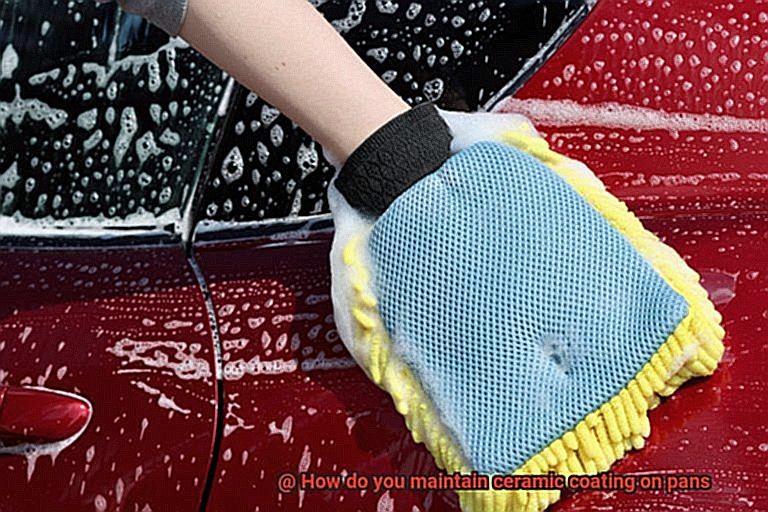
First and foremost, ceramic coatings provide a non-stick surface that makes cooking and cleaning up a breeze. Unlike traditional non-stick coatings that can release harmful chemicals when overheated, ceramic coatings are safe and durable. This means you can enjoy delicious meals without worrying about any negative health effects.
But the benefits don’t stop there. Ceramic-coated pans are also a healthier alternative to traditional non-stick pans. They are free from PFOA and other harmful chemicals, and they require less oil or butter for cooking. This can help reduce your overall fat intake, making it easier to maintain a healthy diet.
In addition to being healthier, ceramic-coated pans distribute heat evenly. This means your food will cook more evenly, which is especially important when cooking delicate foods that require precise temperature control. And because ceramic coatings are highly scratch-resistant, your pan will last longer and look better over time.
But how do you ensure that your ceramic-coated pan lasts as long as possible? To start, use wooden or silicone utensils to avoid scratching the surface. Additionally, cook at lower heats to prevent overheating the coating, clean gently with mild soap and water, and season periodically to keep your pan performing at its best.
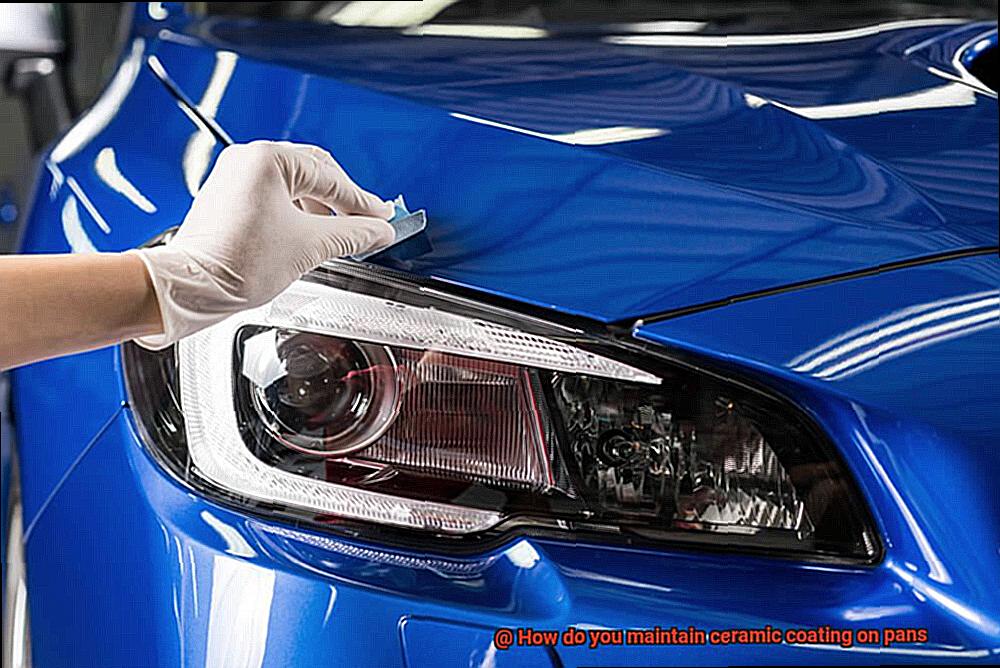
Avoid Metal Utensils
Here’s why you should avoid metal utensils like the plague:
Metal utensils, such as spatulas and tongs, can scratch the surface of the ceramic coating. This wear and tear will cause your once non-stick pan to become stickier over time, making it harder to clean and maintain. But that’s not the worst part: scratches can also expose the metal base layer underneath. This may pose health risks when you consume food cooked in a scratched pan.
So what should you use instead? Opt for silicone, nylon, or wooden utensils. Not only are they gentler on your pan’s surface, but they also help prolong the lifespan of your precious kitchen tool.
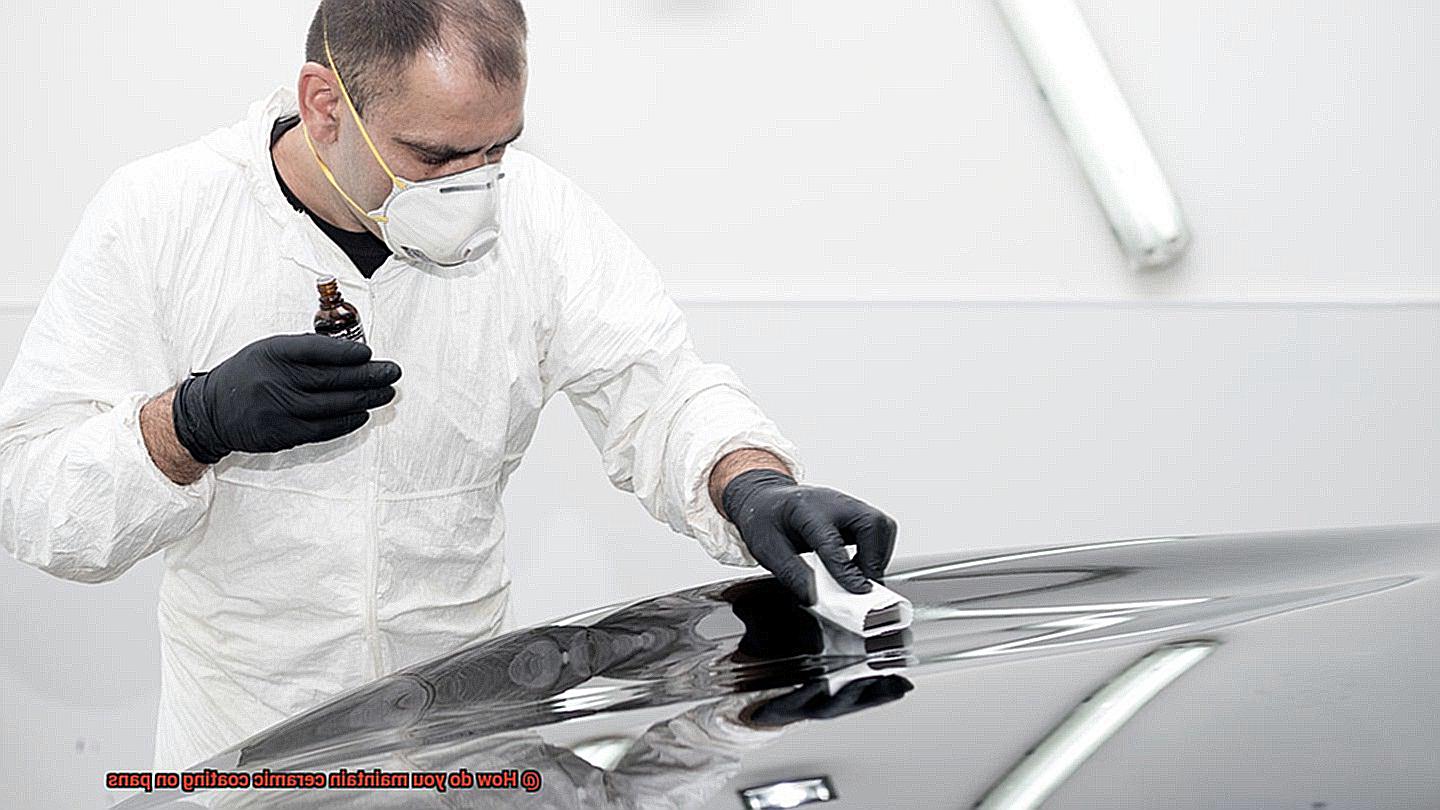
However, accidents happen, and if you do happen to scratch your ceramic coating with a metal utensil, stop using the pan immediately. Continued use could lead to even further damage. Instead, switch to using silicone, nylon, or wooden utensils right away to avoid any potential harm.
Prevention is always better than cure. One way to prevent scratches is by storing your ceramic-coated pans properly. Avoid stacking them on top of each other without any sort of protective layer in between. Scratches and chips caused by careless storage can cut short the lifespan of your pan.
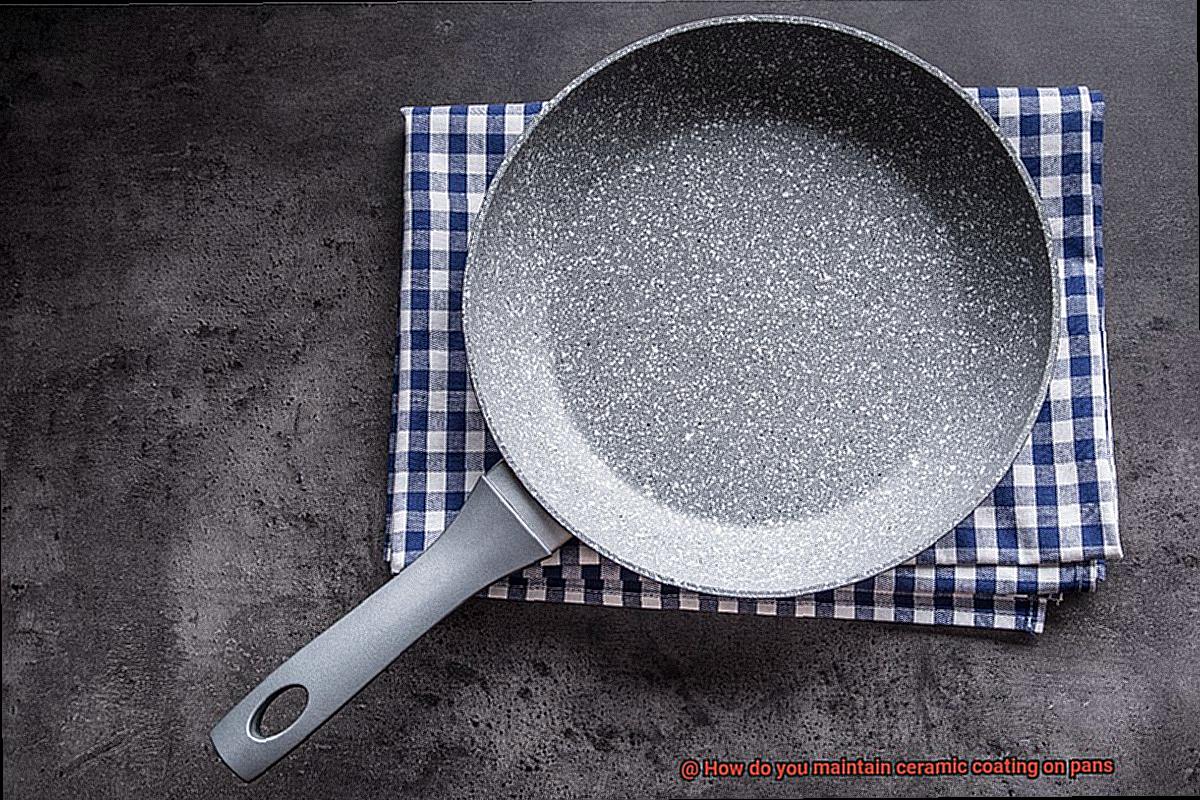
Use Low/Medium Heat Settings
It is a crucial step in maintaining the quality and durability of your pans.
Why is it so significant to use low to medium heat settings? High temperatures can cause damage to your pan’s ceramic coating, leading to chipping or flaking, which can pose health risks and shorten your pan’s lifespan. To prevent this from happening, it is recommended that you use a heat setting below 500°F.
Another essential step when cooking with ceramic coated pans is preheating your pan on low to medium heat for a few minutes before adding any ingredients. This ensures that the heat is distributed evenly throughout the pan, preventing food from sticking to its surface. It is also imperative to avoid using non-stick cooking sprays or oils as they can build up over time and damage the ceramic coating.
If you accidentally overheat your ceramic coated pan, don’t fret. Allow it to cool down entirely before attempting to clean it. Using cold water on a hot pan can cause warping or cracking. Once cooled, gently clean the surface with a soft sponge or cloth with mild soap and warm water. Avoid using abrasive scrubbers or harsh chemicals that can damage the coating.
To sum it up, following these steps by using low to medium heat settings and proper care of your ceramic coated pans will ensure their longevity for years of non-stick cooking. Remember, taking care of your cookware is just as important as preparing a delicious meal. So go ahead and cook up a storm with confidence. Here’s a quick list of steps to remember:
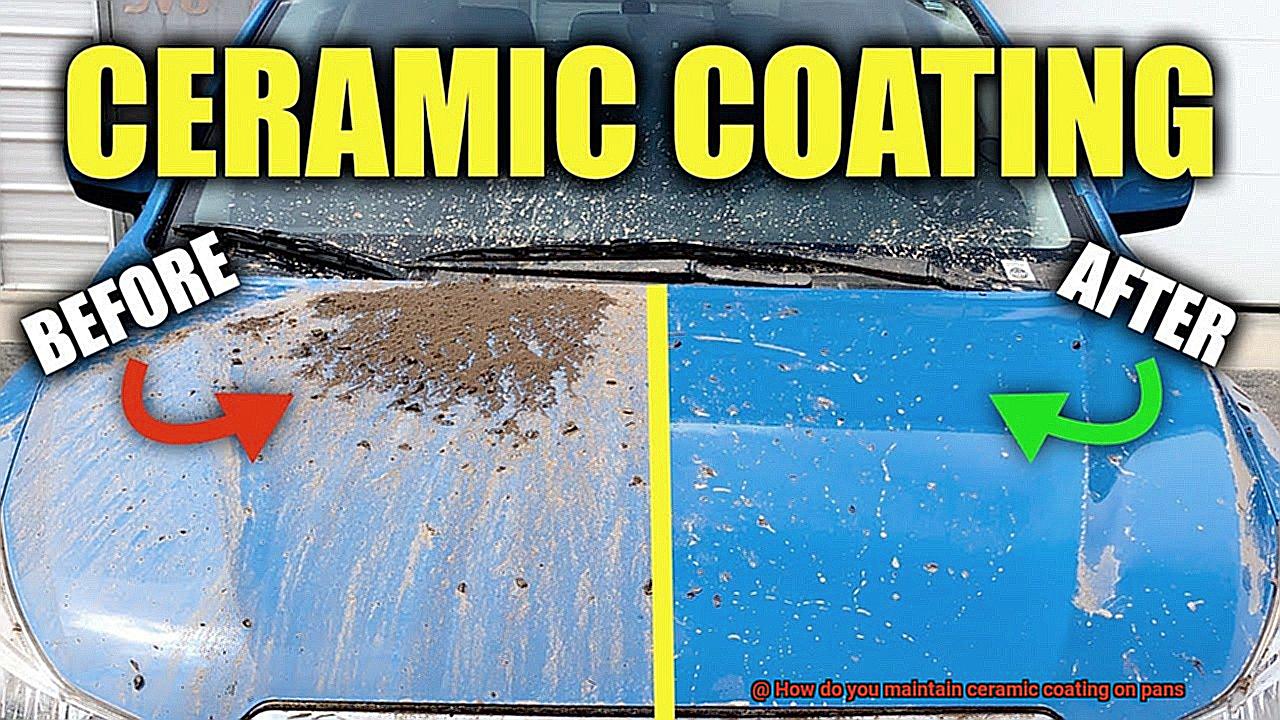
Cleaning Ceramic-Coated Pans
Cooking with ceramic-coated pans is a game-changer for any home chef who enjoys non-stick cookware. However, keeping these pans in top shape requires proper cleaning techniques to maintain their non-stick properties and extend their lifespan. Luckily, cleaning ceramic-coated pans is a breeze with a few simple steps.
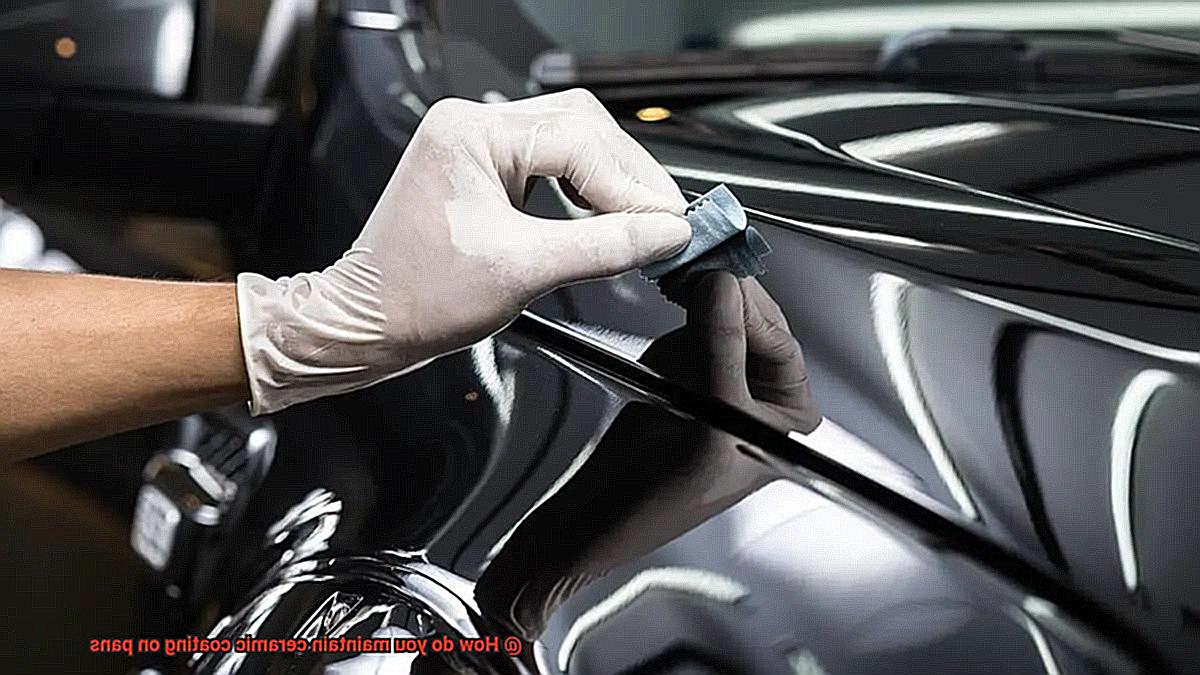
Firstly, it’s essential to let the pan cool down before cleaning it to avoid any thermal shock that can cause the ceramic coating to crack or peel. Once cooled, rinse the pan with warm water and use a soft sponge or cloth to wipe away any food residue. Avoid using abrasive scrubbers like steel wool that can scratch the surface of the pan.
For tougher stains, consider soaking the pan in warm water with a few drops of dish soap for about ten minutes before wiping it clean. Alternatively, create a paste with baking soda and water and apply it to the pan’s bottom and sides before scrubbing gently with a soft sponge or cloth.
When cooking with ceramic-coated pans, it’s best to avoid using cooking sprays that can build up over time and leave residue that is difficult to remove. Instead, opt for a small amount of oil or butter when cooking or invest in an oil mister that allows you to control the amount of oil used.
To summarize, here are some key takeaways for cleaning ceramic-coated pans:
- Let the pan cool down before cleaning.
- Rinse with warm water and use a soft sponge or cloth.
- Avoid using abrasive scrubbers like steel wool.
- Soak in warm water with dish soap or apply a baking soda paste for tough stains.
- Avoid using cooking sprays and opt for a small amount of oil or butter.
Seasoning the Surface Periodically
If you’re an avid home cook, chances are you love the convenience of non-stick cookware. But have you noticed that your favorite pan isn’t performing as well as it used to? Fear not. There’s a simple solution: seasoning the surface periodically.
Why is it so important to season your ceramic-coated pan, you ask? Here are three reasons why:
Restores non-stick properties
Over time, frequent use can cause the surface of your ceramic-coated pan to develop scratches or lose its non-stick quality. Seasoning your pan helps restore its non-stick properties and makes cooking a breeze once again.
Prolongs lifespan
By seasoning your pan, you’re essentially giving it a new lease on life. Proper seasoning can help prolong the lifespan of your ceramic-coated pan and keep it functioning optimally for years to come.
Easy maintenance
Seasoning your pan is a straightforward process that requires minimal effort. By doing it every few months or as needed, you can avoid having to replace your cookware prematurely.
So, how exactly do you season a ceramic-coated pan? Follow these simple steps:
- Wash the pan with warm soap and water.
- Dry the pan thoroughly before applying a small amount of oil onto the surface of the pan.
- Use a paper towel or clean cloth to spread the oil evenly across the entire surface of the pan.
- Preheat your oven to 350°F (177°C) and place the oiled pan upside down on the middle rack.
- Leave the pan in the oven for about an hour to allow the oil to penetrate and bond with the ceramic surface of the pan.
- Turn off the oven and let the pan cool down inside before removing it.
It’s that easy. By seasoning your ceramic-coated pan periodically, you can enjoy the benefits of non-stick cookware for years to come. Remember to avoid using abrasive cleaning tools or metal utensils that can scratch the surface, and stick to soft sponges or non-abrasive cloths with mild dish soap for easy maintenance.
oTaFE_p2OAw” >
Conclusion
In summary, taking care of your ceramic-coated pans is crucial to maximize their lifespan and performance. These pans offer a range of benefits, including non-toxic materials, even heat distribution, and unparalleled non-stick properties that make them a staple in any kitchen. However, to get the most out of your investment, you need to learn how to maintain them properly.
To start with, using wooden or silicone utensils and cooking at low or medium heat settings will help prevent scratches and damage to the coating. Additionally, cleaning with mild soap and warm water is essential for removing any residue without damaging the surface. Avoid using cooking sprays as they can build up over time and leave stubborn residue that’s hard to remove. Instead, use a small amount of oil or butter when cooking.
Proper cleaning techniques are also critical for maintaining ceramic-coated pans. Always let the pan cool down before cleaning it with warm water and a soft sponge or cloth. Avoid using abrasive scrubbers like steel wool that can scratch the surface of the pan.
Finally, seasoning periodically helps restore non-stick properties, prolongs lifespan and makes maintenance easy. By following these simple steps, you’ll ensure that your ceramic-coated pans last longer and perform better than ever before.

